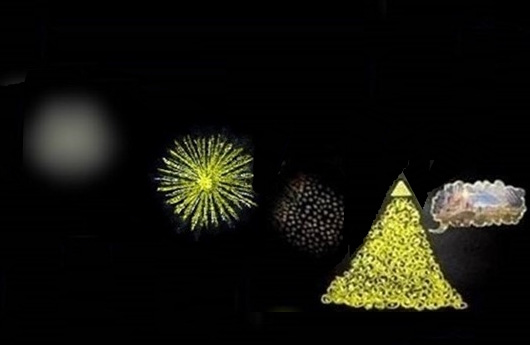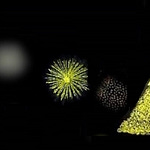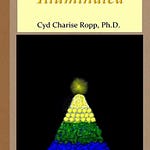A couple of days ago, I was listening to a radio preacher who was railing against people like me and you who are trying to understand Christianity in its most fundamental sense—the original Christianity of the first 300 years after Jesus talked about himself and the Father and Heaven. I want you to realize that the last thing I want to be is a “false prophet” or a “false teacher.” And, of course, that's what he was railing against. And he said that the only way you can be sure that you're not falling into heresy and going to hell is if you follow Orthodox Christianity as presented in the Bible. So, I thought it would be interesting to look at a very important passage in the New Testament that talks about the Son of God, and to compare the Son of God of the New Testament to the Son of God of ancient Christian, what we could call, Gnosticism. But I think it was actual Christianity before the Pope and the Emperor of Rome changed it to become a means of wielding power and keeping the people under their control.
Well, if you've listened to many of the episodes here at Gnostic Insights or to the Gnostic Reformation on Substack, you will see that some of the terms that we use, although they sound like the same exact terms, have different meanings. And this was something else that the radio preacher pointed out—Oh, don't believe them when they talk about the Son or the Christ or God the Father, because that isn't the God, the Christ, and the Son that we know, he said. And that's the tragedy of the situation, because there is only one originating source. There is only one Father by definition, and I often talk about that.
The Son in this Gnostic Christianity that I'm presenting is the first encapsulation or the first breakout. It's the first emanation of the Father. The Father, it says in the Tripartite Tractate, stretched himself out, and it was this stretching out that is the Son that made a space for the heavens and the cosmos and the Earth and all of creation to unfold. Here's what it says in the Tripartite Tractate, part one, verse 64. It says,
“The Father, in accordance with his exalted position over the Totalities”… let's stop here a minute before we go further. The Totalities are also called the Aeon of the Aeons. The Totalities, what I generally call the ALL, and I use capital letters to show that this is a particular type of entity; it's not just a word like the totality of God. No, the Totality, the Totalities, the ALL, is the Son’s complete Self. He wears them like a cloak and they wear him like a cloak. They are, in other words, coexistent. Just like yourself, if someone sees you and they say, Oh, there's Mary, right? Well, Mary's not just a big giant thing. Just like the Son isn't just the Son. When you see Mary, you see she has brown hair and she is a 5 feet tall and she it looks like this, she has two arms, two legs. She's got all of this within her. That's the Totality of Mary. So, Mary's right foot would be one of the Totalities of Mary. You see what I'm trying to say? So, the Totalities of the Son is a place and it's an entity, and they all are together in one unity. As the Son is a unity, the Totalities are the Son's unity, although they're all broken out and distinguished. But they don't realize themselves because they sit in perfect coexistence with the Son, who is a unity. So, back to reading from the Tripartite Tractate. It says,
“The Father, in accordance with his exalted position over the Totalities, being an unknown and incomprehensible one, has such greatness and magnitude, that, if he had revealed himself suddenly, quickly, to all the exalted ones among the Aeons who had come forth from him, they would have perished.”
So, the Father couldn't reveal himself in all of his greatness, because they would just burst. They would explode because they can't fit him in. So the Father always held back his true incomprehensibility. He held it back because the Totalities and Aeons could not comprehend it. He held it back in order to protect them. It says,
“if he had revealed himself suddenly, quickly, to all the exalted ones among the Aeons and those of the Totalities who had come forth from him, they would have perished. Therefore, he withheld his power and his inexhaustibility within that in which he is.”
And we're talking about the Father. What is, that in which the Father is? because the Father is everything. He's the ground state, so he can't reside in something else. Nothing came before him. He doesn't exist within something. But what has all the Father in it? That's the Son. That's the encapsulation. That's the monad. That's the bucket dipped into the sea of consciousness. The bucket is the Son. Inside the bucket it’s the same exact character of God the Father, but it's in a place now. It's inside the bucket. It's still infinitely large because there is no space. There's no distance, there's no measurability. It's all infinite to us, but it's in a particular place. It's now what's called a monad, and that is the Son. It goes on to say,
“The Father is ineffable and unnameable and exalted above every mind and every word. This one, [the Father], however, stretched himself out, and it was that which he stretched out, which gave a foundation and a space and a dwelling place for the universe, a name of his being the one through whom, since he is the Father of the ALL, out of his laboring for those who exist, having sown into their thought that they might seek after him.”
And, stopping here, a moment earlier in the Tripartite it says that although the ALL, the Totalities of the ALL, could not grasp the Father because he was too great for them to grasp, the Father left in them, through a seed sown in their thoughts, that they should seek after the Father, that they should seek after the one who created them; that they should look for the consciousness from which they came. So, even though they weren't given the ability to grasp it, they were given the desire to find it. And that's what keeps the Totalities constantly looking towards the Father and glorifying the Father, even though they can't see the Father. They know he's out there and they're giving him glory. It goes on to say,
“The abundance of their” (and there's a missing word, but I think the missing word is probably the abundance of their love or the abundance of their praise) “consists in the fact that they understand that he exists and in the fact that they ask what it is that was existing.”
Now we're switching to talk about the Son: “The one that was given to them for enjoyment and nourishment and joy and an abundance of illumination, which consists in his fellow laboring, his knowledge, and his mingling with them, that is the one who is called, and is in fact, the Son, since he is the Totalities and the one of whom they know both who he is and that it is he who clothes.” Because I often say the Son wears the ALL and the ALL wears the Son as clothing, as skin; they’re co-existent. They're together. And so, therefore, the Son labors alongside the ALL because he clothes them, just like our skin labors alongside us because it “clothes” us. The Tripartite goes on to say,
“This is the one who is called Son and of whom they understand that he exists and they were seeking after him. This other is the one who exists as Father and as the one about whom they cannot speak, and the one of whom they do not conceive. This is the one who first came into being.”
So you see, the difference between the Father and the Son, even though the Son is made up of exactly the same stuff as the Father, is that the Son is conceivable, he is knowable by the Totalities of the ALL because he's with them. He's walking with them. The Father they don't know, but they know he's out there and they love him anyway. The ALL don't know the Father because they can't know the Father. He's too big. They know the Son because they can know the Son. So, speaking now of the Father, the Tripartite Tractate goes on to say,
“It is impossible for anyone to conceive of him or think of him. Or can anyone approach there, toward the exalted one, toward the pre-existent in the proper sense? But all the names conceived or spoken about him are presented in honor, as a trace of him,” (and in another place in the Tripartite it likens the trace to an aroma, to a beautiful fragrance. It's like you can smell the bread baking; you don't see the bread baking, but you can smell it, so you know it's there. In the same way, the Totalities metaphorically smell the trace of the Father's beautiful fragrance.) “But all the names conceived or spoken about him are presented in honor, as a trace of him, according to the ability of each one of those who glorify him.”

And again, those who glorify him—those are the Totalities. Those are the Aeon of the Aeons. So, this is before the next emanation, the next generation. These are the Totalities of the ALL. This is not the Fullness of God. These are the Totalities of the ALL—it’s a different place. Then it goes on to say,
“Now he who arose from him when he stretched himself out for begetting and for knowledge on the part of the Totalities,” (again, the Father wants to be known, so he's stretching himself out). “He,” and now we're talking of the Son, and there's some couple of missing words. Then it says, “all of the names without falsification. And he is in the proper sense, the first sole one, the man of the Father,” (so they're calling the Son the man of the Father. Of course he's not a man like us humans. It's a different usage of the word man—more like entity or creation, let's say. But he's not a creation either, because he is the Father stretched out and contained in that bucket, right? “that is, the one whom I call...” OK, now we're going to list the characteristics of the Son of God. Here they are:
The form of the formless,
the body of the bodiless,
the face of the invisible,
the word of the unutterable,
the mind of the inconceivable,
the fountain which flowed from him,
the root of those who were planted,
and the God of those who exist,
the light of those whom he illumines,
the love of those whom he loved,
the Providence of those for whom he providentially cares. (That means the one who gives the things that are gotten. So when you pray for something in particular, you're asking for Providence. You're asking for a gift from the Son of God.)
the wisdom of those whom he made wise,
the power of those to whom he gives power,
the assembly of those whom he assembles to him, (and the other word for assembly--do you know what it is? It's church. So in the New Testament, whenever the word church appears, the Heavenly Church, the Pre-existent Church, that's the word for assembly. We in this modern age have come to think of it as the church down on the street corner with the cross on the roof; that is not what the church is in its broader sense. It means the assembly of those who come from the Father and the Son. So the first assembly is the ALL—the Totalities of the ALL. So, going on for the description of the Son—that he is the assembly of those whom he assembles to him. So, it's not only the earthly church and the people that go to church that will assemble to the Son; the assembly pre-exists all of us humans.)
The revelation of the things which are sought after,
the eye of those who see,
the breadth of those who breathe,
the life of those who live,
the unity of those who are mixed with the Totalities.
“All of them exist in the single one, as he clothes himself completely and by his single name he is never called. And in this unique way they are equally the single one and the Totalities.”
So, again, in modern Christianity we talk about a three-part God: the Father, the Son, and the Holy Spirit. So the Father and the Son are co-existent. And what is this Holy Spirit? It's the Totalities of the ALL. All three are co-existent. The Father stretches himself out, and then the Son comes forth. The Son’s parts—his sub-selves—are the Totalities of the ALL. That's the Father, the Son, and the Holy Spirit.
Now, going back to this idea of the assembly—earlier in the Tripartite Tractate, part one, verse 58, says, “Those which exist have come forth from the Son and the Father like kisses because of the multitude of some who kiss one another with a good insatiable thought, the kiss being a unity, although it involves many kisses.” (Isn't that sweet, to have such a kissing metaphor?) “This is to say, it is the church consisting of many men that existed before the Aeons.” (So again, this Assembly, this Church of many men, well, there were no humans, but they’re calling these entities men that existed before the Aeons. The Aeons haven't come forth yet. They haven't sorted themselves into the Hierarchy of the Fullness of God. So we're talking about the Totalities,) “which is called in the proper sense, ‘the Aeons of the Aeons,’” (because it's the Totalities that will give birth to the Aeons). “This is the nature of the holy imperishable spirits upon which the Son rests,” (so this is saying outright here in the Tripartite Tractate that the Totalities of the Son are the holy spirits, the holy imperishable spirits. They will never go away.) “holy imperishable spirits upon which the Son rests, since it is his essence, just as the Father rests upon the Son.”
So, the ALL is also known as the Church, is also known as the Holy Spirits Upon which the Son rests, and in other types of Gnosticism this is called the Barbelo. The ALL is equated to the Barbelo. The Tripartite Tractate doesn't use the term Barbelo. So this is the Son and the constituents of the Son, the ALL, the Aeons of the Aeons.
Now let's look at the book of Colossians in the New Testament. It's a letter that was written to the Colossians, purportedly by Paul, and it talks about the same things. And so in my mind, this is more proof that the Tripartite Tractate and the New Testament agree with one another. First Colossians, 1:15, says,
“The Son is the image of the invisible God, the firstborn over all creation. For by him all things were created: things in Heaven and on Earth, visible and invisible, whether thrones or powers or rulers or authorities; all things have been created through him and for him. He is before all things, and in him all things hold together. He is the head of the body, the church; he is the beginning and the firstborn from among the dead, so that in everything he might have the supremacy. For God was pleased to have all his fullness dwell in him, and through him to reconcile himself to all things, whether things on Earth or things in Heaven, by making peace through his blood, shed on the cross.”
That's a traditional translation from the New International Version of the Bible. Now I'm going to read you the exact same part out of Hart’s translation, which is a fresh translation not derived from Old Latin versions that have been anglicized. This is directly from the Greek that the New Testament was written in, from the oldest manuscripts. Here's what Colossians said,
“Who is the image of the invisible God, firstborn of all creation,” (or it could be said, first born of every creature, the first born or born prior to all creation. Any of those translations could be made from the words.) “because in him were created all things in the heavens and on Earth, the visible as well as the invisible (whether Thrones or Lordships or Archons or Powers);” Archon is a word that we're familiar with in Gnosticism. They don't use it anymore in the New Testament, but that was the translation. “All things were created through him and for him, and he is before all things and all things hold together in him, And he is the head of the body of the assembly—who is the origin, firstborn from the dead, so that he might himself hold first place in all things—For in him all the Fullness…” (and that is capitalized Fullness, so it's not just the fullness of God as an adverb. It's the Fullness and the actual Greek word is pleroma, and that's another word we use a lot in Gnosticism, the Pleroma.) So, “For in him all of the Fullness was pleased to take up a dwelling,” (they coexist), “And through him to reconcile all things to him, making peace by the blood of his cross through him, whether the things on Earth or the things in the heavens.”
So, the conventional Christian interpretation of this is that the blood of the cross, and here we are coming up to Easter so we talk about things like the blood of the cross, that there's something magical about the blood of the cross. And I wracked my mind for a long time; I prayed about this for a long time. What is it about the blood of Christ? Is it that it dripped onto this material plane of the Earth and therefore magically transformed it or something? I don't think that that's it. I think that once Christ, and Christ is not exactly the same as the Son, and I think we'll talk more about Christ in a week or two when Easter comes, but Christ was fully God and fully man, so he was a human male that was completely enlivened by the Father. He was 100% God, 100% human, and he carried throughout his life stream—throughout his blood—the full and complete power of God contained within a human body. The Fullness; the Pleroma. And we'll talk about this more later, that the Christ was the firstborn on the Earth carrying the full Pleroma with recognition, with consciousness. And that is the difference. It was through Christ’s blood, i.e., what was coursing through his veins, his DNA, his blood, that carried the Fullness of God. The full Spirits of the Totalities all alive, all conscious, walking around on the Earth, and that was the first time that had happened. Now it's possible for all of us, anyone who is redeemed in Christ. That's what it means to be filled with the Holy Spirit. Because, as we've just been talking, the Holy Spirit is a synonym for the Totalities of God. It's not just, Well, I got a lot of spirit today. I'm singing those songs. I'm praying those prayers. That's not what being filled with the Holy Spirit is. It's being filled with the Totalities of the ALL.
One thing I would like to leave you with is a quote from Second Corinthians. It says. “Now this is our boast. Our conscience testifies that we have conducted ourselves in the world, and especially in our relations with you, with integrity and godly sincerity. We have done so, relying not on worldly wisdom but on God's grace, for we do not write to you anything you cannot read or understand.” And that is what I hope I do here on Gnostic Insights.
Onward and upward! And God Bless.
Hey, I'm going to be appearing on the Aeon Byte Gnostic Radio program on April 1st at 10:00 in the morning, Pacific Time. You can reach it through Aeon Byte’s YouTube channel. It will be a live stream YouTube with opportunities to interact with me. I'll be mainly talking about the new book, A Simple Explanation of the Gnostic Gospel of the Tripartite Tractate, which is almost ready to be released on all the major book platforms, published by Christian Faith Publishing. There's all kinds of last minute tweaks needed on the book having to do with the color, changing the color values from RGB to CMYK, and so now we're going through that process. Otherwise it would have been in hand by now. So, I hope that all of you will tune in on April 1st, 10:00 AM, to Aeon Byte Gnostic Radio. See you there.















Is the Gnostic Son of God the same as the Biblical Son of God?